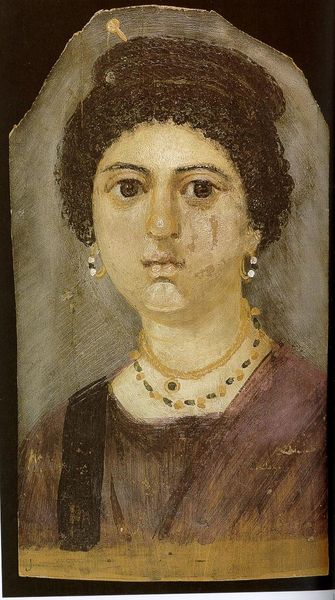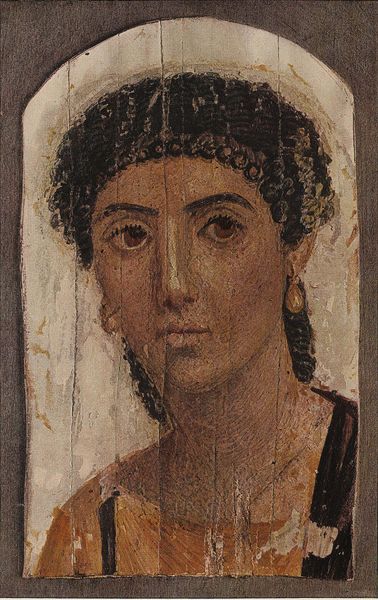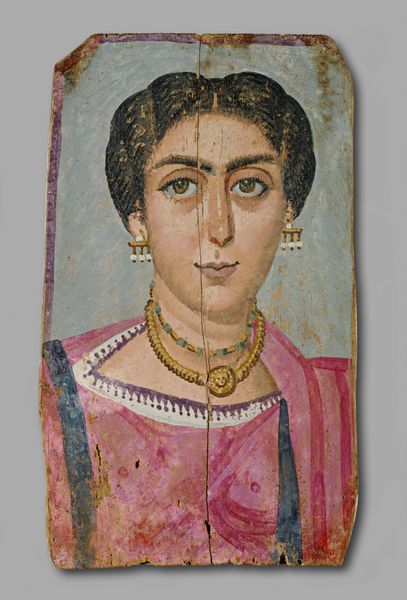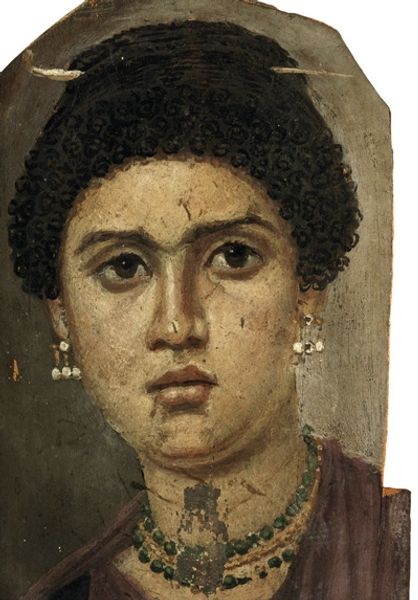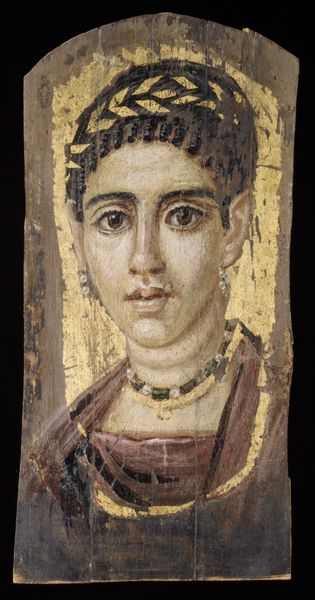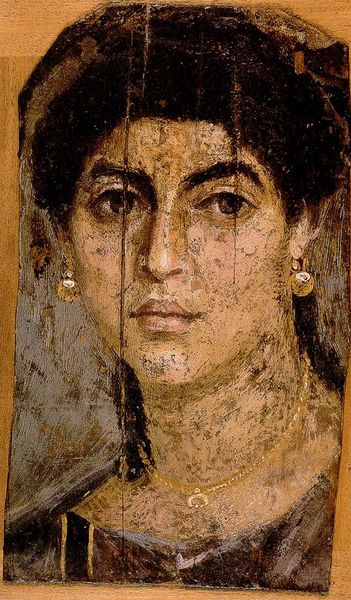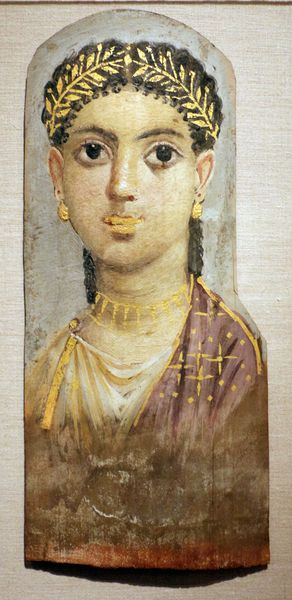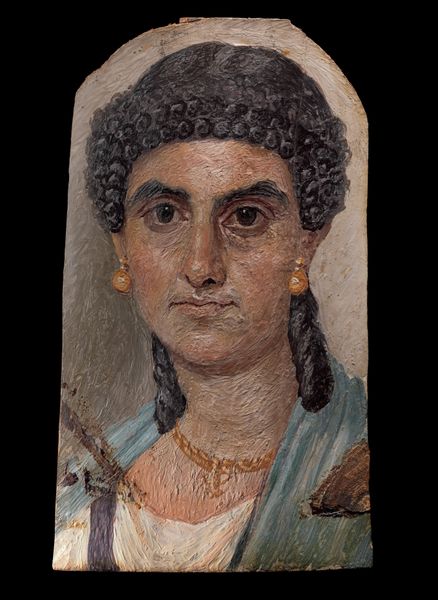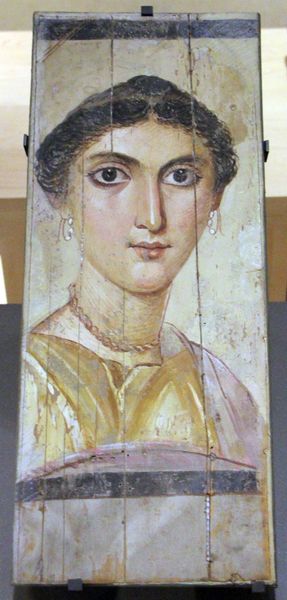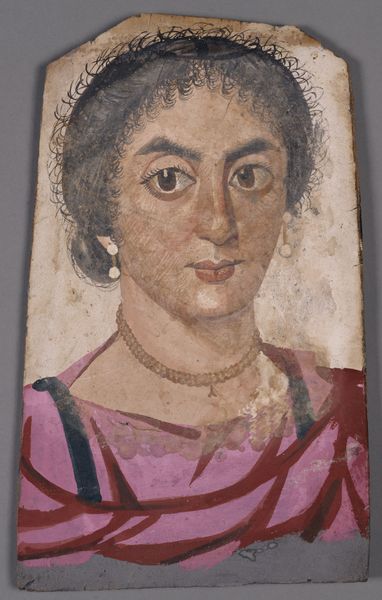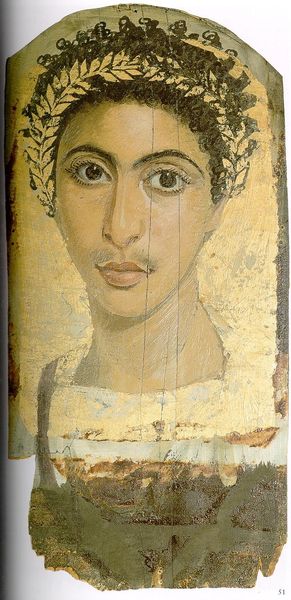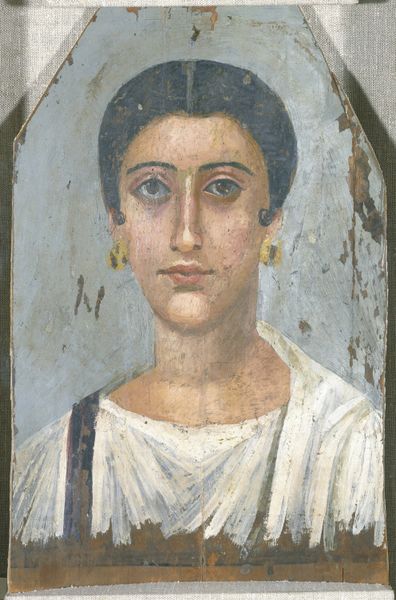
painting, oil-paint
#
portrait
#
painting
#
oil-paint
#
ancient-egyptian-art
#
oil painting
#
ancient-mediterranean
#
realism
Copyright: Public domain
Editor: This is the Fayum Mummy Portrait, dating back to around 70 AD. It’s an oil painting and it's currently held at the Egyptian Museum of Berlin. The subject's gaze is striking. How would you interpret this work, particularly regarding its materials and production? Curator: The intense realism of this portrait, achieved with oil paint—a medium then gaining traction—speaks volumes about Roman Egypt's access to, and manipulation of, resources. Oil paints themselves needed specific raw materials, complex production methods, and skilled labor. This portrait wasn't just about depicting an individual; it represents an intricate web of economic and social relationships connected to materiality and making. Editor: So you’re saying the very fact they used oil paint tells us about more than just artistic style? Curator: Precisely! The use of costly pigments, the probable workshop setting for its creation, and its final purpose—affixed to a mummy, meant for burial—underscore complex social stratifications and beliefs about the afterlife. Consider, too, the economic implications of these portraits; the wealthy commissioning such works spurred artistic production. Editor: It's amazing how the artwork transcends its role as an object. Was the labor involved specialized? Curator: Without question. Producing paints required skilled artisans. Applying them to create such detailed portraits shows mastery. Understanding art history isn't just about appreciating the final image but understanding these processes that required specialised work that supported these traditions. Editor: It shifts the focus from the subject of the portrait to the means by which it came to exist, so interesting! Curator: Absolutely. Focusing on production makes it easier to challenge traditional divisions that separate ‘fine’ and ‘applied’ art – hopefully we will be mindful of this moving forward!
Comments
No comments
Be the first to comment and join the conversation on the ultimate creative platform.
